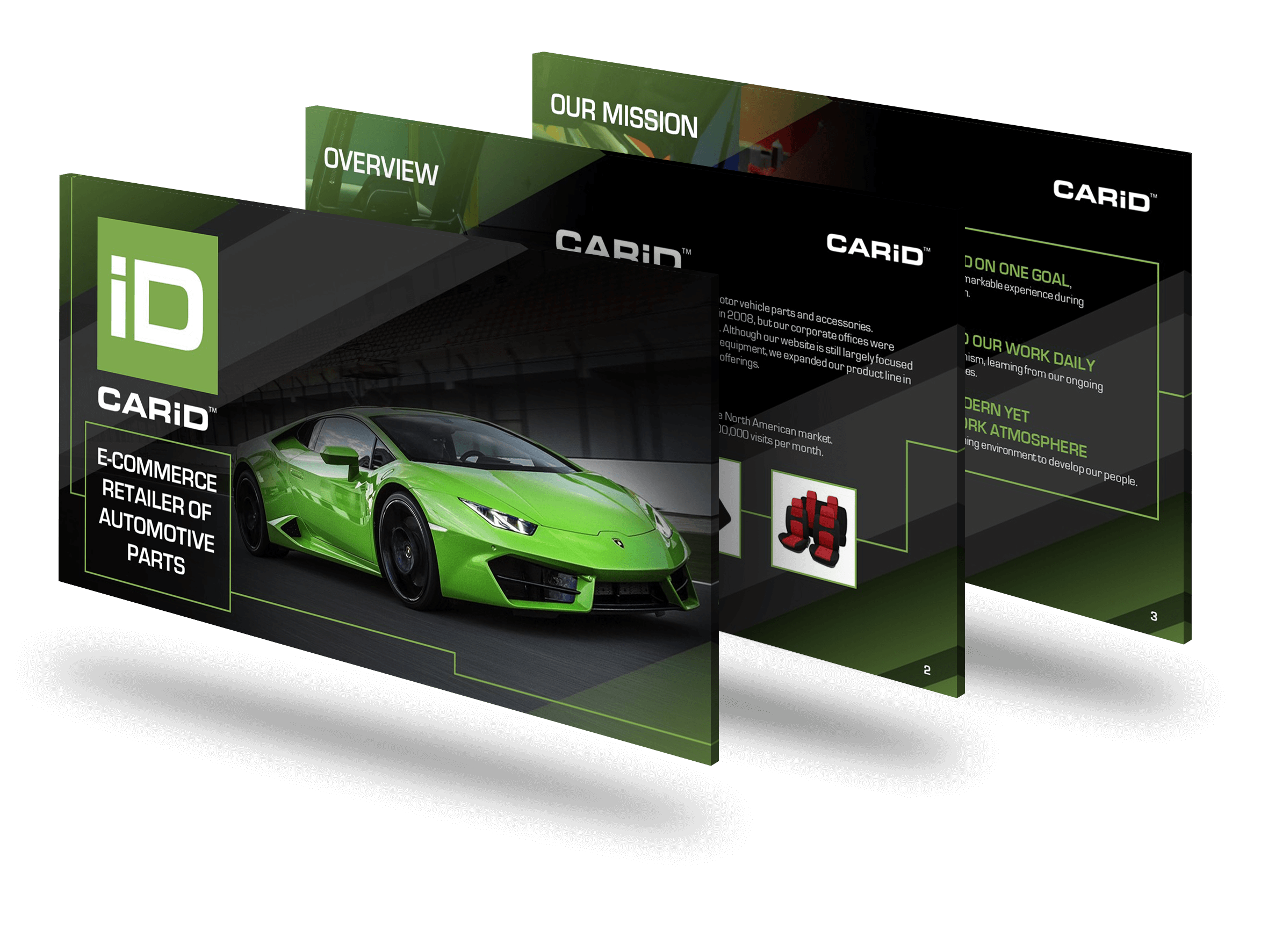How can I find a professional to help with pitchbook presentation design?
Finding a professional to help with pitchbook presentation design involves several key steps to ensure you get the best results. Start by researching firms or individuals who specialize in presentation design. Look for portfolios that showcase their previous work, paying close attention to their ability to create visually appealing and effective presentations. Consider their experience in your specific industry, as familiarity with your field can significantly enhance the relevance and impact of the presentation. Reading client testimonials and reviews can also provide insight into their reliability and quality of service. When you have a shortlist, reach out to discuss your project needs, timelines, and budget. A good presentation designer will ask insightful questions about your goals, audience, and key messages to tailor the design to your specific requirements. They should also be able to offer strategic advice on content structure and visual storytelling to ensure your pitchbook is compelling and persuasive. Ultimately, choosing a professional with a proven track record, industry experience, and a collaborative approach will help you create a pitchbook presentation that stands out and effectively communicates your message.
View Our Presentation Portfolio

Get a Quote on a Custom Designed Presentation
How can I create a professional design for my pitchbook?
Creating a professional design for your pitchbook involves several key steps to ensure it effectively communicates your message and engages your audience. Here are some practical tips to help you achieve a polished and compelling pitchbook:
- Understand Your Audience: Tailor your design to the preferences and expectations of your target audience. Consider their industry, level of expertise, and what they value most in a presentation.
- Consistent Branding: Use your company’s branding guidelines to maintain consistency in colors, fonts, and logos. This helps in reinforcing your brand identity and making your pitchbook look cohesive.
- Clean Layout: Opt for a clean and uncluttered layout. Use ample white space to avoid overwhelming your audience and to make your content more digestible. Organize information logically and use headings and subheadings to guide the reader.
- High-Quality Visuals: Incorporate high-resolution images, charts, and graphics to make your pitchbook visually appealing. Visuals should support and enhance your message, not distract from it.
- Readable Typography: Choose fonts that are easy to read and professional. Avoid using too many different fonts; stick to one or two complementary fonts for a clean look.
- Engaging Content: Ensure your content is clear, concise, and compelling. Highlight key points and use bullet points for easy reading. Tell a story that resonates with your audience and clearly outlines the benefits of your proposal.
- Professional Software: Utilize professional design software or tools that offer advanced features for creating high-quality pitchbooks. These tools often provide templates and design elements that can elevate the overall look of your presentation.
- Proofreading and Feedback: Before finalizing your pitchbook, proofread it for any errors and seek feedback from colleagues or mentors. A fresh set of eyes can help identify areas for improvement.
By following these steps, you can create a pitchbook that not only looks professional but also effectively communicates your message and engages your audience. If you find the process overwhelming or time-consuming, consider seeking expert assistance to ensure your pitchbook meets the highest standards of design and effectiveness.
View Our Presentation Portfolio

Get a Quote on a Custom Designed Presentation
How can I find a professional to design a high-quality pitchbook presentation for my business?
Finding a professional to design a high-quality pitchbook presentation for your business involves several key steps to ensure you receive a polished and effective final product. Start by researching experienced presentation design firms or freelancers who specialize in business presentations. Look for portfolios that showcase their previous work, paying close attention to the quality, creativity, and relevance of their designs to your industry. Next, read client testimonials and reviews to gauge their reliability and customer satisfaction. It’s also beneficial to check if they offer a consultation to discuss your specific needs, goals, and brand guidelines. During this consultation, assess their understanding of your business and their ability to translate complex information into visually compelling slides. Additionally, inquire about their process, turnaround time, and any additional services they might offer, such as content development or data visualization. A professional designer should be able to provide a clear timeline and a structured approach to ensure your pitchbook is not only visually appealing but also strategically aligned with your business objectives. By following these steps, you can find a skilled professional who will create a high-quality pitchbook presentation that effectively communicates your message and enhances your business’s credibility.
View Our Presentation Portfolio

Get a Quote on a Custom Designed Presentation
How can I create a professional design for a pitchbook?
Creating a professional design for a pitchbook involves several key steps to ensure your presentation is visually appealing, cohesive, and effectively communicates your message. Here are some practical tips to help you achieve a polished and professional look:
- Understand Your Audience: Tailor your design to the preferences and expectations of your audience. Consider their industry, level of expertise, and what they value most in a presentation.
- Consistent Branding: Use your company’s branding guidelines to maintain consistency. This includes using the same color palette, fonts, and logo placement throughout the pitchbook.
- Clean and Simple Layout: Avoid clutter by using a clean and simple layout. Use white space effectively to make your content more readable and to highlight key points.
- High-Quality Visuals: Incorporate high-resolution images, icons, and graphics that are relevant to your content. Visuals should enhance your message, not distract from it.
- Readable Typography: Choose fonts that are easy to read and professional. Stick to a maximum of two to three fonts to maintain a cohesive look. Ensure that text size is appropriate for both print and screen viewing.
- Engaging Cover Page: Your cover page is the first impression, so make it count. Use a compelling image or graphic along with a clear and concise title.
- Structured Content: Organize your content logically with clear headings and subheadings. Use bullet points and numbered lists to break down complex information.
- Data Visualization: Use charts, graphs, and infographics to present data in an easily digestible format. Ensure that these visuals are accurate and clearly labeled.
- Professional Software: Utilize professional design software or tools that offer advanced features for creating high-quality pitchbooks. These tools often provide templates and design elements that can save time and enhance the overall look.
- Proofreading and Feedback: Before finalizing your pitchbook, proofread for any errors and seek feedback from colleagues or mentors. A fresh set of eyes can catch mistakes you might have missed and provide valuable insights.
By following these guidelines, you can create a pitchbook that not only looks professional but also effectively communicates your message and engages your audience.
View Our Presentation Portfolio

Get a Quote on a Custom Designed Presentation
How can I create a professional pitchbook that effectively communicates my business proposal?
Creating a professional pitchbook that effectively communicates your business proposal can seem daunting, but with some guidance and careful planning, it is a task that you can accomplish. Here’s a step-by-step guide to help you:
1. Identify Your Audience: Before you start creating your pitchbook, first understand who your audience is. Are they potential investors, partners, or customers? This understanding will help you tailor your pitchbook content to suit their needs and expectations.
2. Define Your Purpose: Clearly defining the purpose of your pitchbook will help you stay on track. Whether you’re looking for investment, new customers, or partners, your purpose will guide the content you include.
3. Highlight Your Unique Selling Proposition (USP): What makes your business or proposal unique? Your USP should be a key part of your pitchbook. Highlight why your business or idea stands out from the rest.
4. Include Relevant Data: Back up your statements with relevant data. Whether it’s market size, growth rates, or financial projections, data provides evidence to support your claims.
5. Tell a Story: Facts and figures are important, but a well-told story can be more compelling. Use your pitchbook to tell the story of your business or idea. This could include the problem you’re solving, how you came up with the idea, or where you see the business going in the future.
6. Use Professional Design: A well-designed pitchbook can make a big difference in how your proposal is perceived. Use professional design tools to create a clean, visually appealing pitchbook. If you’re not comfortable with design, consider hiring a professional design agency such as SlideGenius to help.
7. Review and Refine: Don’t just make your pitchbook and forget about it. Review it regularly and make updates as needed. This will ensure your pitchbook is always up-to-date and relevant.
Remember, a pitchbook is a powerful tool for communicating your business proposal. By following these steps, you can create a pitchbook that is professional, compelling, and effective.
View Our Presentation Design Portfolio
